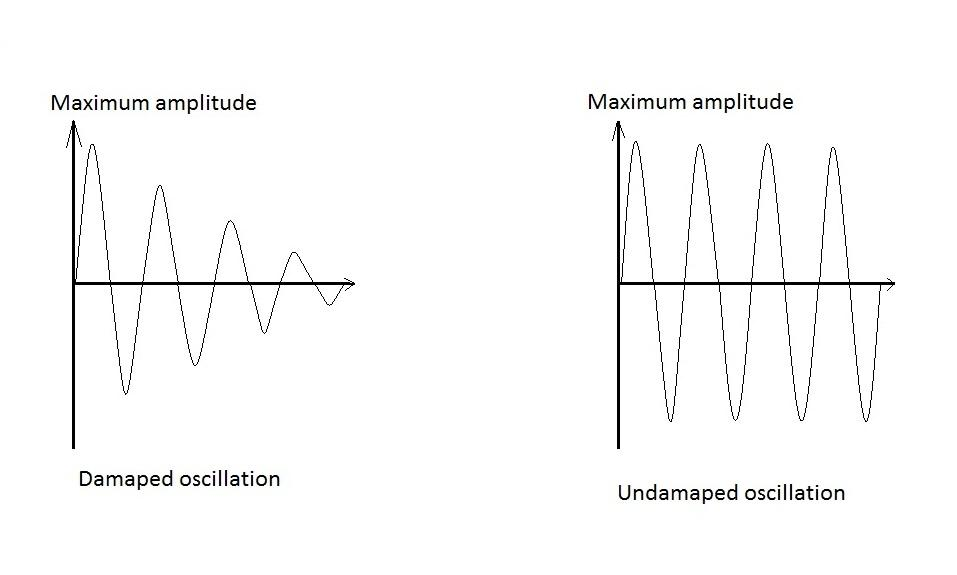
When the oscillations produced are of constant amplitude. They are called.
Answer
484.8k+ views
Hint: Oscillation means the process of repeating motion of any quantity about its equilibrium with time. Oscillation can also be defined as a periodic motion of a matter between two extreme positions about its mean position. Any kind of oscillation can not remain constant but when they are constant i.e., amplitude remains the same then they are called undamped oscillation.
Complete answer:
In damped oscillation the amplitude of the vibration or the motion continuously decreases with the time and finally ceases. But undamped oscillations have constant amplitude and they do not change with time, but they go on repeating continuously. They oscillate indefinitely. Undamped oscillations have no power losses. Whereas the damped oscillation has power losses. Generally, every vibration is more or less damped, so to get to undamped vibrations we need to supply energy from the external source to make them damped.
The graph below represents the damped and the undamped vibrations.

In the above graph the damped and undamped oscillations are shown where we can observe that in the damped one the maximum amplitude continuously decreases to zero and in the undamped one the amplitude remains unchanged it continues to remain the same indefinitely.
Note:
The oscillations are mainly the vibrations in which amplitude decreases with time for every kind of oscillation but for an undamped oscillation we need to provide extra energy from the external source to get the amplitude to a constant magnitude. This kind of oscillation is not naturally obtained. Extra effort is required to get to a fixed amplitude.
Complete answer:
In damped oscillation the amplitude of the vibration or the motion continuously decreases with the time and finally ceases. But undamped oscillations have constant amplitude and they do not change with time, but they go on repeating continuously. They oscillate indefinitely. Undamped oscillations have no power losses. Whereas the damped oscillation has power losses. Generally, every vibration is more or less damped, so to get to undamped vibrations we need to supply energy from the external source to make them damped.
The graph below represents the damped and the undamped vibrations.

In the above graph the damped and undamped oscillations are shown where we can observe that in the damped one the maximum amplitude continuously decreases to zero and in the undamped one the amplitude remains unchanged it continues to remain the same indefinitely.
Note:
The oscillations are mainly the vibrations in which amplitude decreases with time for every kind of oscillation but for an undamped oscillation we need to provide extra energy from the external source to get the amplitude to a constant magnitude. This kind of oscillation is not naturally obtained. Extra effort is required to get to a fixed amplitude.
Recently Updated Pages
Master Class 11 Economics: Engaging Questions & Answers for Success

Master Class 11 English: Engaging Questions & Answers for Success

Master Class 11 Social Science: Engaging Questions & Answers for Success

Master Class 11 Biology: Engaging Questions & Answers for Success

Class 11 Question and Answer - Your Ultimate Solutions Guide

Master Class 11 Business Studies: Engaging Questions & Answers for Success

Trending doubts
What is meant by exothermic and endothermic reactions class 11 chemistry CBSE

10 examples of friction in our daily life

One Metric ton is equal to kg A 10000 B 1000 C 100 class 11 physics CBSE

Difference Between Prokaryotic Cells and Eukaryotic Cells

What are Quantum numbers Explain the quantum number class 11 chemistry CBSE

1 Quintal is equal to a 110 kg b 10 kg c 100kg d 1000 class 11 physics CBSE




